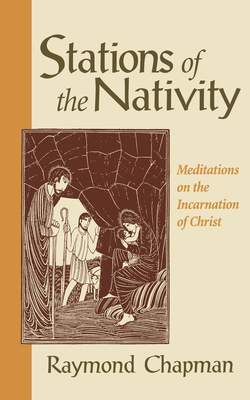Читать книгу Stations of the Nativity - Raymond Chapman - Страница 8
На сайте Литреса книга снята с продажи.
Introduction
ОглавлениеChristmas is certainly the most popular festival of the Christian year. For many people it begins with preparations over a month before, is celebrated with cards, presents, parties and special meals, and is considered to be over within a few days. It attracts more people to at least one church service than any other time, with congregations almost everywhere outnumbering those of Easter.
Christians are by no means required to stand apart from the more secular pleasures of a break in the middle of winter and the many things that are good in shared rejoicing. This is part of God's gift to us in the world of his bountiful creation. But it is too easy to keep Christmas both in pleasure and in worship, and not to be fully mindful of the Nativity which gives it meaning. We are not likely to forget the events of the first Easter; every Sunday is a special observance of the Resurrection, and daily recognition of the presence of the risen Christ both confirms and strengthens our faith. Christmas, partly because of the long work of preparation – which often obscures the true preparation of Advent – seems to come and go and be forgotten for the rest of the year.
The Christmas season can well be seen as extending to the Presentation of Christ in the Temple on 2 February. This gives a period of forty days, a parallel to the duration of Lent and Easter, in which to celebrate the Incarnation and give proper regard to the Epiphany themes. Easter must always be at the heart of the Christian faith, leading from the Cross to the assurance of new life. But there would have been no Cross and no Resurrection without the Nativity. The Christian faith is a faith of incarnation, of the mystery whereby God the Son, the second Person of the Holy Trinity, became fully human for the sake of the whole human race. As the Christmas collect says, he came to ‘take our nature upon him and as at this time to be born of a pure virgin.’ Our Christmas hymns, sung repeatedly in December and scarcely ever heard for the rest of the year, remind us of the result of the Incarnation. ‘God and sinners reconciled’ – ‘Born that Man no more may die’ – God's wondrous love in saving lost mankind’ – ‘To save us all from Satan's power’ – ‘To be our Redeemer from death, hell and sin’.
The early Fathers of the Church gave great weight to the Incarnation. They found in it a double consequence, that the act of divinity in assuming humanity unites us in a new way with God, whose perfection we can never approach by ourselves. ‘He took our flesh, to the end that he might show that the law of the flesh had been subjected to the law of the mind’ (St Ambrose). ‘Having become what we were, he through himself again united humanity to God’ (St Gregory of Nyssa). ‘He became Son of Man, who was God's own Son, in order that he might make the children of men to be children of God’ (St John Chrysostom). ‘He was made man that we might be made God; and he manifested himself by a body that we might receive the idea of the unseen Father’ (St Athanasius).
The stories of the birth of Jesus come to us through the Gospels of St Matthew and St Luke. There are differences of detail and it is not possible to harmonize them completely, but they agree on the divine announcement of God's plan, conception by the Holy Spirit and birth at Bethlehem by the Virgin Mary. Luke tells the story through the experience of Mary, which he may well have heard from her own lips. He records her being with the disciples after the Ascension (Acts 1:14). The legend that he painted a portrait of her is probably not true, but it shows that of all the Evangelists, he was particularly associated with her. Matthew sees some of the events through Joseph. As throughout his Gospel, he emphasizes the links with traditional Judaism, but it is he also who records the Magi, the first Gentiles to see the infant Christ. St John has no nativity story, but he gives us a deep reflection on the theology of the Incarnation by which ‘the Word was made flesh and dwelt among us.’
St Paul has much to say of the wonderful act of incarnation by which the Son of God ‘emptied himself, taking the form of a slave, being born in human likeness’ (Philippians 2:6). ‘God sent his Son, born of a woman, born under the law’ (Galatians 4:4). For him, the reconciliation between God and sinful humanity makes Christ the Second Adam, restoring through human nature what had been lost by the Fall and all subsequent sin (1 Corinthians 15: 45–9).
The Nativity is the birth of one and the new birth of many, through all the generations of believers that were to come. The events from Good Friday to Easter Day would complete the transformation, but this is where it all began.
Let us then keep Christmas with every sort of rejoicing, but let us honour the Nativity at other times as well. The forty days to the Presentation give us much material for devotion and meditation. During the long summer Trinity season, we can hold together the wonder of both Christmas and Easter, drawing continually on the insights which we have gained at the time of their special observances. Easter lifts us to the things eternal: Christmas affirms this world as God's creation, loved by him in spite of sin, made new by his own gracious act. The two worlds are drawn together, so that whenever we enjoy human pleasures we can offer them also in the light of eternity.
